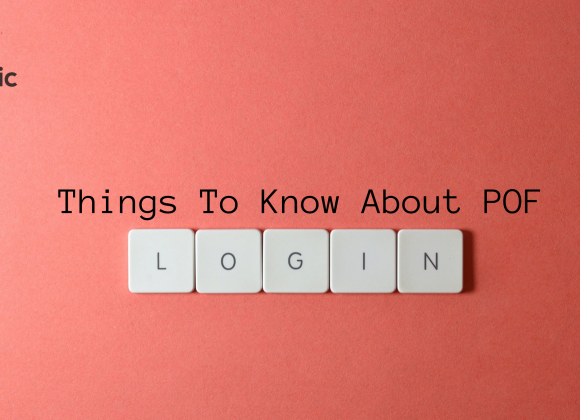Welcome to the labyrinth of the IL minimum wage. It’s a world of numbers, laws, and hourly rates that may initially seem overwhelming. But don’t worry, we’re here, your trusty guide, to help navigate these sometimes murky waters. This article is your roadmap, deftly outlining the intricacies of Illinois minimum wage laws, with informative waypoints marking key areas like the Fair Labor Standards Act, paid sick leave, and wage increases. It’s tailored for everyone – employees, employers, and the curious. So, whether you’re a tipped employee in a bustling Chicago diner or an employer in rural Illinois, there are insights for you here. Let’s decode IL minimum wage together, one law, one rate, one hour at a time.
Current Minimum Wage Rates in Illinois 2023
Alright, let’s dive into the details of the current minimum wage rates in Illinois for 2023. As of January 1, 2023, a seismic shift has taken place in the landscape of Illinois’ hourly wages. The Illinois Department of Labor, true to its word, implemented a guaranteed minimum wage of $13.00 per hour for workers 18 years and older. Imagine this – an employee, fresh into adulthood, earning a solid $13 an hour.
But what about businesses where gratuities are part and parcel of earnings? Well, they’ve got you covered. Such employers can pay their employees 60% of the minimum wage. A fair tip credit. It’s a delicate balance, keeping the employer and tipped employee in mind.
Interestingly, there’s another provision. Employers may apply for licenses to pay sub-minimum rates to learners and workers with specific physical and mental limitations. A nod to inclusivity? Illinois state law strives to uphold the principles of the Fair Labor Standards Act in its approach to wage regulations.
Now, let’s talk about overtime. After 40 hours of labor in a week, the hardworking individuals of Illinois can expect time and one-half their regular rate. That’s right, overtime pay becomes mandatory at this point. So, whether you’re a non-tipped worker clocking in extra hours or a small business owner keeping tabs on your employees’ hours, it’s essential to keep these wage increases in mind.
From Chicago’s bustling diners to St. Louis’ quiet corners, these changes in Illinois minimum wage law have impacted workers, employers, and the pulse of the employment scene. It’s a new chapter in Illinois’ labor law story, indeed.
The Impact of Minimum Wage Changes
The rise in Illinois’ minimum wage law is akin to a ripple in a quiet pond, triggering subtle yet profound effects on businesses and workers alike.
- For Businesses: A surge in labor costs can be an initial shock. Companies, tiny businesses, must adapt to stay afloat. The increase in hourly wages can strain budgets, possibly leading to tightened operations or a reevaluation of staffing needs. However, there’s a silver lining. Higher salaries can foster employee loyalty, reducing turnover and the associated costs. Furthermore, businesses may observe an uptick in productivity due to a more motivated and content workforce.
- For Workers: The hourly wage increase can be a welcome relief to many. Workers, whether tipped employees or non-tipped, can breathe easier. A higher income often means improved quality of life and financial security. The heartening prospect of overtime pay after 40 hardworking hours in a week offers a tangible validation of the sweat and grit employees pour into their jobs. However, the flip side is the risk of reduced hours or job losses if businesses struggle to absorb the wage increase.
In the dynamic chessboard of Illinois’ employment scene, implementing this new minimum wage law is a bold move. The effects stretch beyond the borders of Illinois state, influencing federal minimum wage discussions and contributing to the evolving narrative of labor law across the United States.
In essence, the impact of the IL minimum wage increase is two-fold. It throws up challenges businesses must navigate while providing workers with much-deserved financial upliftment. Like pieces in a complex jigsaw, the economic effects of these wage changes fit together to form a picture of an evolving Illinois labor market. Thus, the story of Illinois minimum wage continues, with each chapter revealing new facets of this multifaceted issue.
Budgeting and Lifestyle: How Minimum Wage Changes Affect Individuals
As the hands of the clock turn, bringing Illinois’ minimum wage to a new high, changes flutter through the lives of its citizens. Each tick echoes in the daily rhythm of their existence, affecting habits, routines, and expectations.
- Budget Planning: With the wage increase, budgeting morphs into a different beast. The increased earnings often lead to a reshuffling of financial priorities. Essentials become more accessible, and once unaffordable, luxuries may slip within grasp. The sound of coins dropping into a savings jar grows louder, gratifying in its promise of a secure future.
- Lifestyle Shifts: The ripple of the wage increase also laps at the shores of lifestyle. Higher earnings pave the way for improved living conditions. It could be a better neighborhood, a more comfortable home, or simply the ability to afford healthier food choices. The upgrade in lifestyle can be both profound and subtle.
- Education and Skill Development: Higher wages can also unlock doors to education and skill development. There may be a course, a certification, or a hobby class that was always out of reach. With boosted income, workers can now invest in personal growth, enhancing their future employability.
- Healthcare Access: Healthcare, often a sore point for many, becomes more manageable with elevated earnings. Regular check-ups, necessary medications, and even preventative care are no longer distant prospects. The wage increase can contribute to a healthier Illinois.
- Recreational Activities: The wage hike might also color the leisure hours of workers with brighter hues. Be it a movie ticket, a new book, a gym membership, or a weekend getaway, recreational activities become more feasible, enriching life beyond work.
With an increase in the Illinois minimum wage, the individual’s world expands, altering their approach to budgeting and lifestyle. It’s a shift that echoes in the quiet counting of coins, the careful budget planning, and the smiles brought about by newfound financial freedom. Thus, the narrative of Illinois wages continues, not just in-laws and numbers but in the lived experiences of its citizens.

Staying Compliant: Navigating Illinois Minimum Wage Laws
As an employer in the vibrant heartland of Illinois, staying compliant is crucial. After all, the Illinois Department of Labor keeps a watchful eye on these matters. So, let’s delve into the key facets of Illinois minimum wage laws, aiding you to steer clear of any accidental mishaps.
Firstly, let’s talk about the minimum wage rate. It stands at $13.00 per hour for workers 18 years and older. Consequently, as an employer, you should ensure the wage you pay aligns with this standard. Failure to do so can lead to penalties, a scenario you’d prefer to avoid.
Next, we wade into the realm of overtime. After a 40-hour work week, the rules mandate overtime pay at time-and-one-half the regular rate. Notably, this applies to both tipped and non-tipped workers. Familiarize yourself with these laws to avoid any unwelcome surprises.
In addition, remember to comply with provisions for tipped employees. Your establishment can pay them 60% of the minimum wage, factoring in the fair tip credit. As such, it’s essential to strike a balance, ensuring both parties are satisfied.
Lastly, in exceptional cases, employers may obtain licenses to pay sub-minimum rates to learners or workers with physical and mental limitations. In these situations, staying compliant involves understanding the subtleties of Illinois state law and acting accordingly.
While compliance might seem daunting initially, clarity comes with understanding. By staying informed about the Illinois minimum wage laws, you can ensure your business remains on the right side of the law. After all, navigating this can seem like a labyrinth, but with the right knowledge, it becomes a roadmap to success.
Illinois Minimum Wage and the Job Market
The shift in Illinois’ minimum wage casts new light on the job market, like the morning sun illuminating a bustling city. As salaries rise, so too does the lure of job opportunities. It’s akin to a magnet, pulling in job seekers eager for the promise of improved wages.
Yet, this landscape is about more than just the numbers. It’s about the people, their aspirations, their stories unfolding in boardrooms and storefronts. It’s about the small business owner eyeing growth prospects, the tipped employee dreaming of financial stability, and the non-tipped worker aspiring for better living conditions.
Everywhere you look, the change is palpable. In the downtown diners of Chicago, the quiet shops of St. Louis, or the bustling streets of New York. The narrative of employment has been rewritten, its chapters echoing the vibrancy of increased minimum wage.
There’s another side to this coin, though. The wage increase also poses challenges for some businesses, especially small employers. They must adapt, reevaluate, and sometimes make tough decisions to stay afloat. It’s a dance of resilience and change, played out in the heart of the Illinois job market.
But rest assured, the story doesn’t stop here. The job market continues to evolve, adapting to changes and embracing new possibilities. Much like a river reshaping its course, the narrative of Illinois’ employment scene carves a path through the rocky terrains of change, seeking out calmer waters of stability and growth.
In essence, the Illinois minimum wage has sparked a revolution in the job market. It’s a revolution reshaping the face of employment, one paycheck at a time. So, let’s keep a keen eye on this dynamic tapestry as it continues to tell the ever-evolving tale of the Illinois job market.
Conclusion
Navigating the IL minimum wage is like journeying unchartered waters, brimming with discovery and challenges. This guide, like a seasoned captain, has steered you through the labyrinth of laws and impacts, illuminating the nuanced corners. Amidst these changes, Orderific is a beacon for restaurant owners, simplifying operations while enhancing customer experience. As we traverse the dynamic waves of the Illinois job market, Orderific’s automation tools free up resources, allowing businesses to focus on dealing with wage adjustments and enhancing employee well-being. It’s much like navigating a ship through unsteady waters, with the promise of serene shores ahead. For a glimpse into smoother operations amidst the IL minimum wage narrative, schedule a FREE DEMO with Orderific today.
FAQs
What is the current minimum wage in Illinois in 2023?
As of 2023, the minimum wage in Illinois is $13 per hour for workers 18 years and older.
Are there different minimum wage rates for different types of employees?
Yes, tipped employees can be paid 60% of the minimum wage, considering the tip credit. Special licenses may allow lower wages.
What are the upcoming changes to the Illinois minimum wage?
The Illinois minimum wage is set to increase to $14 per hour starting from January 1, 2024.
How does Illinois compare to neighboring states in terms of minimum wage?
Il minimum wage is higher than most neighboring states, reflecting its commitment to worker welfare.
Are there any exceptions to the minimum wage requirements?
Yes, employers may pay less to learners or workers with physical and mental limitations with special licenses.













